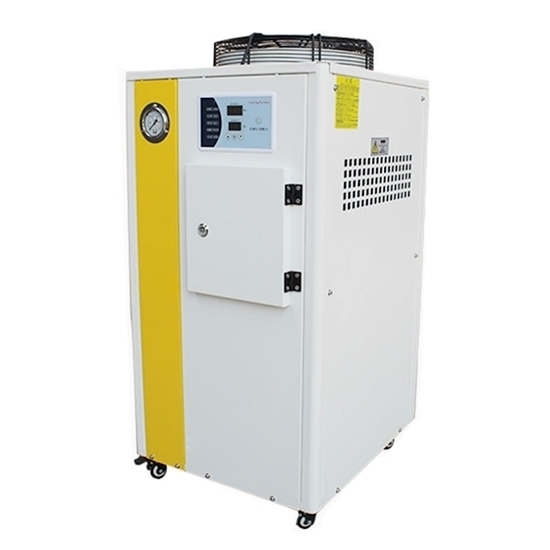Like most chillers, air-cooled chillers operate occasionally at full capacity conditions, due to building load variations. Therefore, it is important to understand the three primary methods of capacity control:

- Unloading the compressors
- Cycling the compressors on and off (single or multiple compressors).
- Hot gas bypass
Unloading the compressors is possible with reciprocating and screw compressor types. Scroll compressors do not unload; they are either on or off. Reciprocating compressors utilize loaders that lift the suction gas valve so that the pistons do not compress the gas. Unloaders are a cost-effective method of reducing capacity, but because the pistons continue to operate at all times, the energy efficiency using unloaders is not as high as with the cycling method. Screw compressors utilize a slide valve to cover the suction inlet ports, effectively shortening the length of the screws and reducing the resulting amount of compressed refrigerant vapor. Capacity control is not continuous with slide valves as the valves cover or uncover the suction ports similar to staging the compressor.
Cycling the compressor is a cost-effective and energy-efficient method for reducing capacity, especially when multiple compressors are used in the system. However, cycling the compressors too frequently may result in compressor motor damage and fail-ure, thus controls are built into the chiller to control the time between cycles. Larger variable flow in chiller that use multiple compressors combined with multiple refrigeration circuits can successfully cycle the compressors to achieve part-load capacity control. During peak loads,all compressors and circuits are operational. During lighter loads, individual compressors on one circuit may be cycled off thus providing an acceptable part-load profile.
Hot gas bypass is a method that bypasses some of the high-pressure refrigerant gas (hot gas) discharged from the compressor back to the evaporator line without going through the condenser. Naturally, this affects the system capacity, as some of the refrigeration is effectively “lost” from the cycle. The capacity of the chiller on hot gas bypass will be some what lower than the capacity at the lowest step of unloading. However, use of hot gas bypass is not considered efficient since the compressor continues to operate while a significant portion of the system does not provide any cooling.
